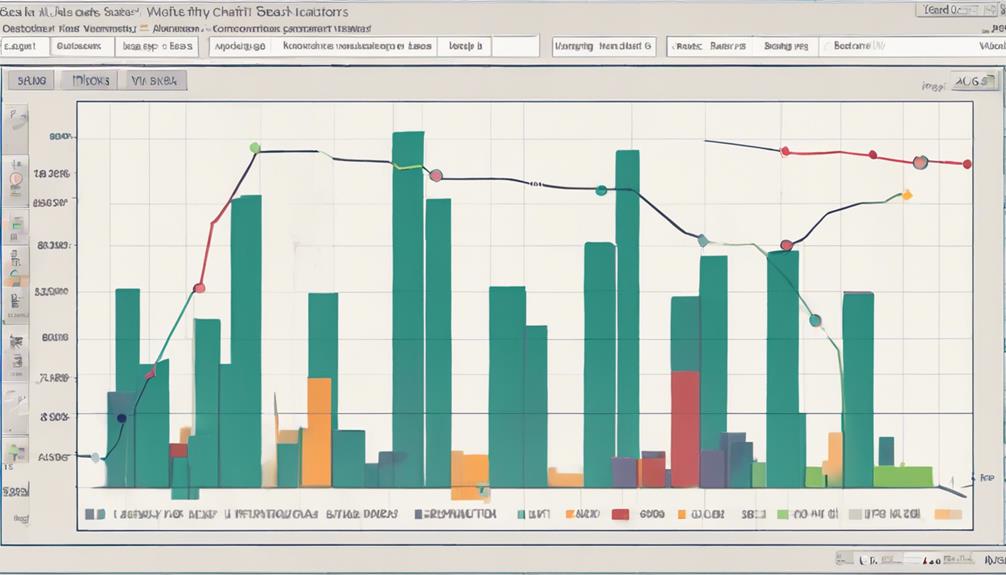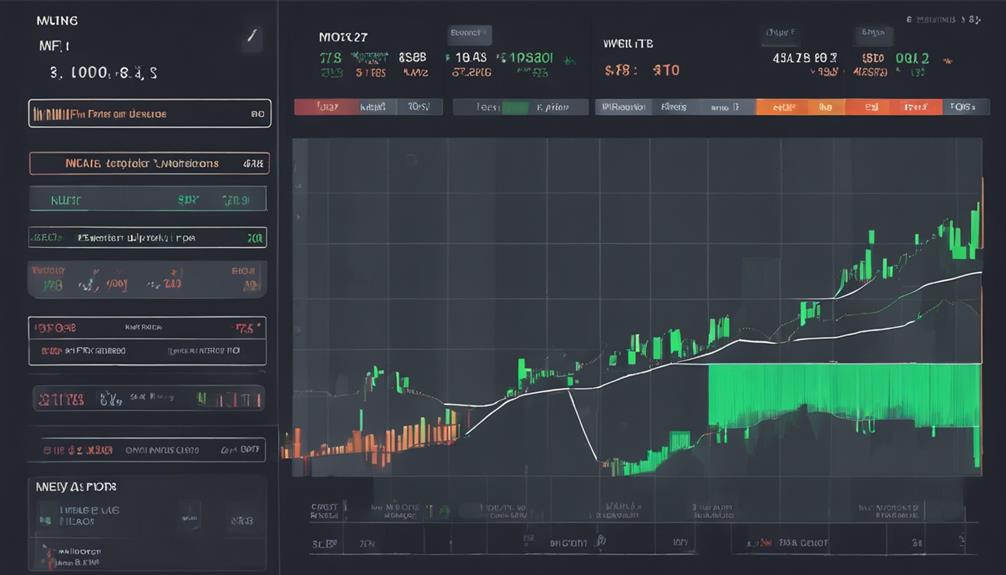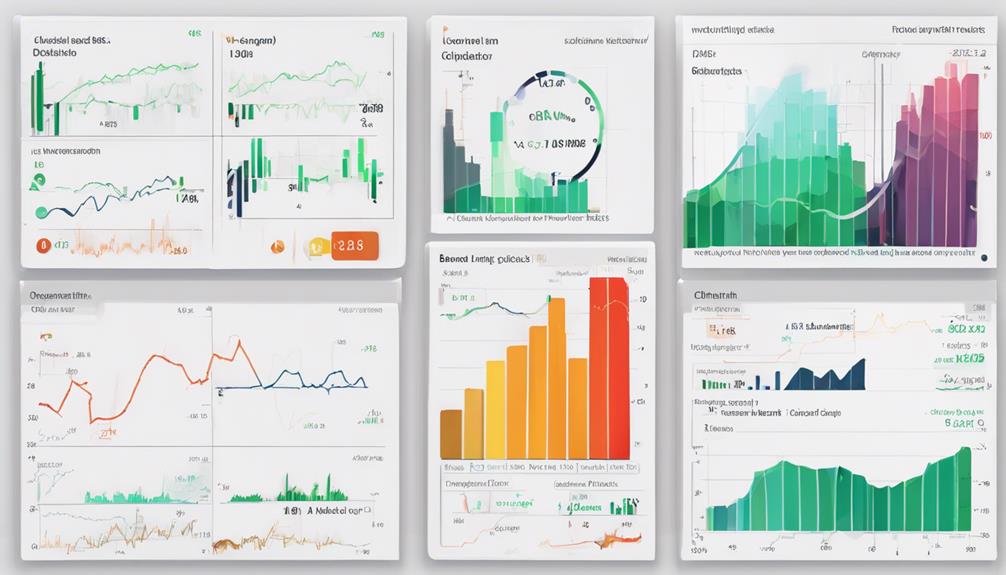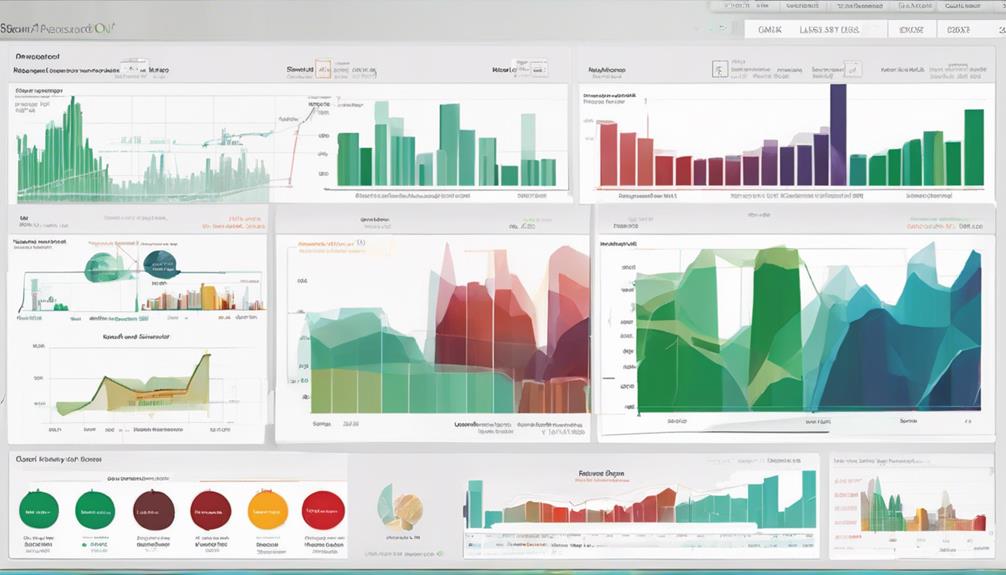When analyzing volume-based indicators for investment decisions, understanding the nuances of On-Balance Volume (OBV), Accumulation/Distribution Indicators, Money Flow Index (MFI), Chaikin Money Flow (CMF), and the Volume Weighted Average Price (VWAP) can be pivotal in shaping your investment strategy.
These indicators serve as vital tools in deciphering market dynamics and potential shifts that could impact your portfolio.
By incorporating these top 5 volume-based indicators into your decision-making process, you equip yourself with valuable insights that could potentially steer your investments towards success.
On-Balance Volume (OBV)
On-Balance Volume (OBV), a key volume-based indicator in investment analysis, was introduced by Joseph Granville in 1963 to compare asset volume with price movements. As an indicator of momentum, OBV plays a crucial role in identifying trends and offering insights into investor sentiment.
When OBV values rise, it suggests potential price increases, providing actionable signals that surpass traditional volume histograms. This tool not only helps confirm existing trends but also signals possible market reversals.
Particularly valuable for tracking the flow of money in and out of a security, OBV aids investors in understanding the strength and direction of price movements based on volume analysis.
Accumulation/Distribution Line

The Accumulation/Distribution Line, developed by Marc Chaikin, provides valuable insights into the flow of money in and out of a security based on price movements and volume analysis.
- It helps identify potential trend changes by analyzing the relationship between volume and price movements.
- The direction of the Accumulation/Distribution Line signals bullish or bearish trends in the market.
- Divergences between the Accumulation/Distribution Line and price can indicate possible shifts in market sentiment.
- Developed by Marc Chaikin, this indicator offers insights into whether a stock is being accumulated or distributed by investors.
Understanding the Accumulation/Distribution Line can assist you in gauging market sentiment and predicting potential trend shifts in a security.
Money Flow Index (MFI)

Analyzing price and volume dynamics, the Money Flow Index (MFI) quantifies buying and selling pressure within a security on a scale from 0 to 100. This momentum oscillator helps traders gauge overbought and oversold conditions by considering the interplay between price and volume.
An MFI reading above 80 signals overbought conditions, suggesting a potential price decline, while a reading below 20 indicates oversold conditions, hinting at a possible price increase. By using the Money Flow Index, investors can anticipate trend reversals and make well-informed decisions regarding their investments.
Incorporating both price and volume information, the MFI provides a comprehensive view of the market sentiment, aiding traders in navigating the complexities of the financial markets.
Chaikin Oscillator

Utilizing exponential moving averages, the Chaikin Oscillator is a volume-based indicator designed by Marc Chaikin to measure momentum in the Accumulation/Distribution Line, assisting traders in identifying market trends and potential reversals.
- Helps identify trends and potential reversals based on buying and selling pressure.
- Offers insights into market strength and direction by analyzing accumulation/distribution values.
- Effective for detecting changes in momentum, confirming trends, and anticipating price movements.
- Provides signals for entry and exit points through volume analysis.
Ease of Movement (EOM)

Enhancing cryptocurrency analysis, Ease of Movement (EOM) assesses market movement ease based on average volume trends. This technical indicator is crucial for traders as it helps in understanding price changes concerning trading volume.
EOM is particularly useful in analyzing volatile cryptocurrency markets, providing insights into market behavior. By incorporating EOM as a secondary indicator in trading strategies, investors can gain a more comprehensive view for making informed decisions.
Understanding how volume trends impact price movements is essential for effective risk management in trading. Therefore, leveraging the insights provided by EOM can enhance your market analysis, aiding in better decision-making processes when trading cryptocurrencies.
How Do Volume-Based Indicators Inform Investment Decisions?
When exploring volume indicators, investors can gain insights into market sentiment and price movements. By analyzing trading volume, investors can assess the strength of a current trend and potential reversals. Volume-based indicators provide valuable information for making informed investment decisions and identifying potential buying or selling opportunities.
Frequently Asked Questions
What Are the Most Useful Volume Indicators?
To identify the most useful volume indicators, consider On-Balance Volume (OBV), Volume Weighted Average Price (VWAP), Money Flow Index (MFI), Accumulation/Distribution Indicator, and Volume Price Trend Indicator. These tools help predict price movements and assess market trends.
What Is the Best Indicator for Investment?
For your investment decisions, the best indicator depends on your trading style and goals. Consider factors like On-Balance Volume (OBV), Volume Weighted Average Price (VWAP), and Money Flow Index (MFI) to align with your strategy.
What Is the Best Trading View Volume Indicator?
For the best trading view volume indicator, consider On-Balance Volume (OBV). It predicts price direction by analyzing volume flow, reflecting investor sentiment towards stocks. OBV assists in forecasting stock direction by comparing volume with price movements.
Which Is the Most Successful Stock Indicator?
You'll find that the On-Balance Volume (OBV) indicator shines as the most successful stock indicator, akin to a seasoned captain navigating turbulent seas. It combines volume and price to reveal trends with actionable insights.
Conclusion
You've now learned about the top 5 volume-based indicators for making smart investment decisions.
While some may argue that relying solely on volume indicators may not always guarantee success, incorporating them into your analysis can provide valuable insights into market trends and potential price movements.
By understanding the buying and selling pressure in the market, you can make more informed decisions and increase your chances of success as an investor.
